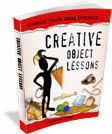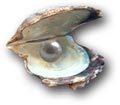We may not all understand it, yet…
 In the city of Chicago, one cold, dark night, a blizzard was setting in. A little boy was selling newspapers on the corner, the people were in and out of the cold. The little boy was so cold that he wasn’t trying to sell many papers. He walked up to a policeman and said, “Mister, you wouldn’t happen to know where a poor boy could find a warm place to sleep tonight, would you? You see, I sleep in a box up around the corner there and down the alley and it’s awful cold in there, of a night. Sure would be nice to have a warm place to stay.”
In the city of Chicago, one cold, dark night, a blizzard was setting in. A little boy was selling newspapers on the corner, the people were in and out of the cold. The little boy was so cold that he wasn’t trying to sell many papers. He walked up to a policeman and said, “Mister, you wouldn’t happen to know where a poor boy could find a warm place to sleep tonight, would you? You see, I sleep in a box up around the corner there and down the alley and it’s awful cold in there, of a night. Sure would be nice to have a warm place to stay.”
The policeman looked down at the little boy and said, “You go down the street to that big white house and you knock on the door. When they come out the door you just say ‘John 3:16’ and they will let you in.” So he did, he walked up the steps to the door, and knocked on the door and a lady answered. He looked up and said, “John 3:16.”
The lady said “Come on in, Son.” She took him in and she sat him down in a split bottom rocker in front of a great big old fireplace and she went off. He sat there for a while, and thought to himself, “John 3:16…. I don’t understand it, but it sure makes a cold boy warm.”
Later she came back and asked him “Are you hungry?” He said, “Well, just a little. I haven’t eaten in a couple of days and I guess I could stand a little bit of food.” The lady took him in the kitchen and sat him down to a table full of wonderful food. He ate and ate until he couldn’t eat any more. Then he thought to himself, “John 3:16… Boy, I sure don’t understand it, but it sure makes a hungry boy full.
She took him upstairs to a bathroom to a huge bathtub filled with warm water and he sat there and soaked for a while. As he soaked, he thought to himself, “John 3:16… I sure don’t understand it, but it sure makes a dirty boy clean. You know, I’ve not had a bath, a real bath, in my whole life. The only bath I ever had was when I stood in front of that big old fire hydrant as they flushed it out.”
The lady came in and got him, and took him to a room and tucked him into a big old feather bed and pulled the covers up around his neck and kissed him goodnight and turned out the lights. As he laid in the darkness and looked out the window at the snow coming down on that cold night he thought to himself, “John 3:16… I don’t understand it, but it sure makes a tired boy rested.”
The next morning she came back up and took him down again to that same big table full of food. After he ate she took him back to that same big old split bottom rocker in front of the fireplace and she took a big old Bible and sat down in front of him and she looked up at and she asked, “Do you understand John 3:16?”
He said, “No, Ma’am, I don’t. The first time I ever heard it was last night when the policeman told me to use it.”
She opened the Bible to John 3:16 , and she began to explain to him about Jesus. Right there in front of that big old fireplace he gave his heart and life to Jesus. He sat there and thought, “John 3:16. I don’t understand it, but it but it sure makes a lost boy feel safe.”
You know, I have to confess I don’t understand it either, how God would be willing to send His Son to die for me, and how Jesus would agree to do such a thing. I don’t understand it either, but it sure does make life worth living. John 3:16
– Author Unknown

 MORE IDEAS? See “Creative Object Lessons”
MORE IDEAS? See “Creative Object Lessons”
200 page e-book that explains everything you need to know when planning your very own object lessons. It contains 90 fully developed object lesson ideas and another 200 object lesson starter ideas based on Biblical idioms and Names / Descriptions of God.
Learn More…

 Materials
Materials![]()
![]()




 In the city of Chicago, one cold, dark night, a blizzard was setting in. A little boy was selling newspapers on the corner, the people were in and out of the cold. The little boy was so cold that he wasn’t trying to sell many papers. He walked up to a policeman and said, “Mister, you wouldn’t happen to know where a poor boy could find a warm place to sleep tonight, would you? You see, I sleep in a box up around the corner there and down the alley and it’s awful cold in there, of a night. Sure would be nice to have a warm place to stay.”
In the city of Chicago, one cold, dark night, a blizzard was setting in. A little boy was selling newspapers on the corner, the people were in and out of the cold. The little boy was so cold that he wasn’t trying to sell many papers. He walked up to a policeman and said, “Mister, you wouldn’t happen to know where a poor boy could find a warm place to sleep tonight, would you? You see, I sleep in a box up around the corner there and down the alley and it’s awful cold in there, of a night. Sure would be nice to have a warm place to stay.”
 Materials
Materials Imagine you and the Lord Jesus walking down the road together. For much of the way, the Lord’s footprints go along steadily, consistently, rarely varying the pace. But your footprints are a disorganized stream of zigzags, starts, stops, turnarounds, circles, departures and returns. For much of the way, it seems to go like this, but gradually your footprints come more in line with the Lord’s soon paralleling His consistently. You and Jesus are walking as true
Imagine you and the Lord Jesus walking down the road together. For much of the way, the Lord’s footprints go along steadily, consistently, rarely varying the pace. But your footprints are a disorganized stream of zigzags, starts, stops, turnarounds, circles, departures and returns. For much of the way, it seems to go like this, but gradually your footprints come more in line with the Lord’s soon paralleling His consistently. You and Jesus are walking as true Rudy Tomjanovich, the former basketball coach of the Houston Rockets and more recently the Los Angeles Lakers experienced an unusual event in 1973. As a robust twenty-five-year old, Rudy was playing for the Rockets.
Rudy Tomjanovich, the former basketball coach of the Houston Rockets and more recently the Los Angeles Lakers experienced an unusual event in 1973. As a robust twenty-five-year old, Rudy was playing for the Rockets.
 Materials
Materials Jack, a 9-year-old elementary student, is sitting at his school desk. All of a sudden there is a puddle between his feet, and the front of his pants are wet.
Jack, a 9-year-old elementary student, is sitting at his school desk. All of a sudden there is a puddle between his feet, and the front of his pants are wet.